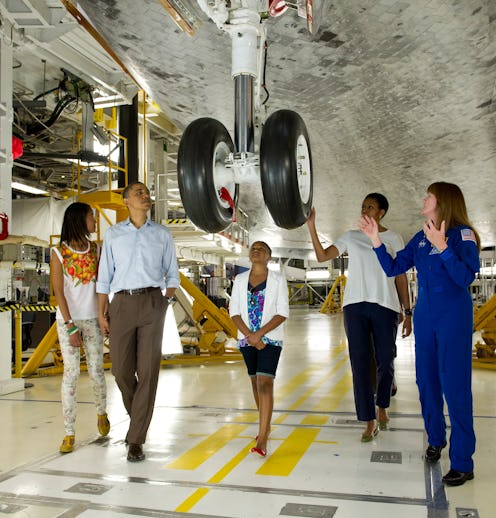News
Women @ NASA Honors Women's Contribution To NASA
As people across the globe honor women in March for Women's History Month (which centers around International Women's Day on March 8), the month is shaping up to be a celebration of women's rights at a time when the movement seems to be reaching a turning point, what with the word "feminism" being brought to the mainstream and the debate over what constitutes feminism is thrown around and in many cases, misinterpreted (remember that whole, "I don't need feminism because..." campaign going around?). But in what I think is an achievement that we can all agree on is the number of women in STEM careers today — one that the U.S. space agency celebrates annually with Women@NASA, a program dedicated to women's contribution to NASA and celebrating their role in the history of space exploration.
Created in 2011 in response to the White House's establishment of the Council of Women and Girls, the program's goal is to highlight the triumphs of female scientists and engineers, particularly at the agency, and features female NASA employees who tell of their personal career journeys. According to the website, it aims to eventually be able to support a female-centric community at NASA, and to serve as the agency's central point of "activity related to women's issues."
Mamta Nagaraja, the program's manager, lauded the changing perception of women in STEM careers — 30 percent of supervisors in NASA today are women, a 59 percent increase from over the past decade; there are now 20 percent of female engineers at the agency, a considerable 79 percent leap since the early 1990s. Nagaraja told the Business Insider that one-third of NASA's civil service employees are female, adding:
I honestly believe the view of women in STEM fields has changed positively, even it is a slow evolution.
At Women@NASA's launch in Washington D.C., NASA deputy administrator Lori Garver said:
Women have made tremendous contributions to NASA over the years. They've been astronauts, scientists, engineers, program managers and served in many other capacities. We have an obligation to reach out to the next generation and inspire today's girls to pursue science and technology careers. Expanding opportunities in these fields will give perspectives and expertise to win the future.
Making history a mere two years after the first human spaceflight in history was cosmonaut Valentina Tereshkova of the Soviet Union who traveled to space in 1963. Twenty years later, America sent its first woman to space, Sally Ride who was aboard the shuttle Challenger in June 1983. In total, 55 different women, including cosmonauts, astronauts, payload specialists, and foreign nationals have been in space — 49 of whom have flown with NASA.
The lack of gender diversity in male-dominated STEM fields has become a rather dire situation, raising the familiar issue of not utilizing the many skills that women can offer. But the problem is being acknowledged and gradually but actively being addressed, as there have been calls to encourage young girls to get more involved in — and remain so — in these fields that the Obama administration seems to have heeded, as evident in its programs to increase the engagement of girls in STEM, as well as its latest, broader efforts to educate girls worldwide.
Image: Getty Images
